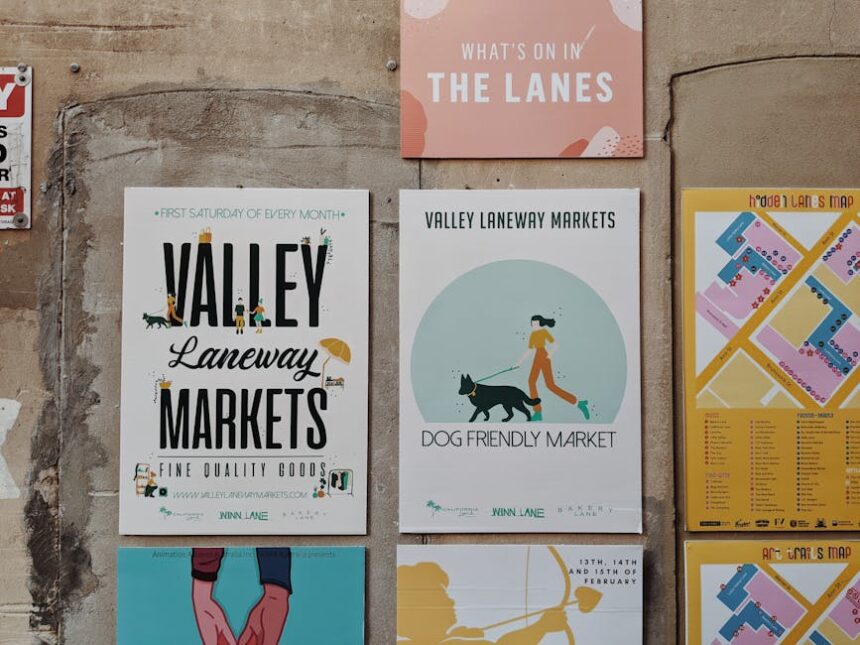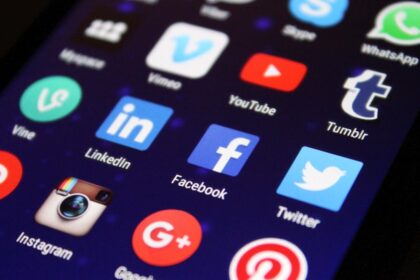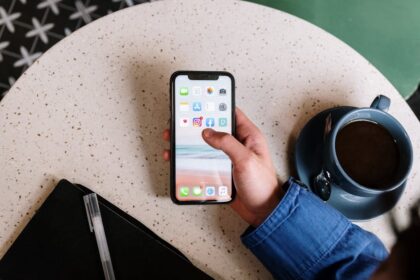Improving Landing Page Performance for Facebook Ads
The Indispensable Role of Ad-Landing Page Congruence
The journey from a Facebook ad click to a successful conversion is fundamentally predicated on seamless congruence between the advertisement and its destination landing page. This foundational principle dictates that every element, from visual aesthetics to explicit messaging and the underlying offer, must align perfectly. When a user clicks an ad, they arrive on the landing page with a pre-existing expectation, shaped entirely by the ad they just interacted with. Any disconnect, however subtle, can lead to immediate confusion, frustration, and ultimately, a high bounce rate and wasted ad spend. Visual congruence is the first touchpoint. If your Facebook ad features a specific product image, a particular model, or a distinct color palette, the landing page should reflect these elements immediately upon arrival. A sudden shift in imagery, branding, or overall visual style creates a jarring experience, eroding trust and causing the visitor to question if they’ve landed in the right place. Consistency in branding – logos, color schemes, typography – across both the ad and the landing page reinforces your brand identity and professional credibility.
Beyond mere aesthetics, message congruence is paramount. The headline, subheadings, and core body copy of your landing page must echo the promise or question posed in the Facebook ad. If your ad promises “50% Off All Winter Coats,” the landing page’s primary headline should immediately validate this offer, perhaps with “Your 50% Off Winter Coats Are Waiting!” or a similar explicit confirmation. Generic landing page copy that doesn’t directly address the ad’s specific call can leave users feeling misled. Every claim, every benefit highlighted in the ad, should find its direct explanation or expansion on the landing page. This isn’t about repeating the ad verbatim, but rather about fulfilling the expectation it set. Think of the ad as the appetizer and the landing page as the main course; the main course must deliver on the promise of the appetizer.
Offer congruence ties directly into message consistency but focuses specifically on the value proposition. If your ad promotes a free trial, a specific discount code, a limited-time bundle, or a downloadable guide, the landing page must immediately present that exact offer. Visitors should not have to hunt for it. The friction caused by searching for the promised offer is a significant conversion killer. For instance, if an ad advertises a “Free 7-Day SaaS Trial,” the landing page should have a prominent button or form clearly labeled “Start Your Free 7-Day Trial,” not merely “Sign Up” or “Learn More.” This direct, immediate validation of the offer reduces cognitive load and reassures the visitor that they’ve made the correct click.
Understanding user intent from the ad click is crucial for maximizing congruence. Different ad creatives and copy will appeal to different segments of your audience, even within the same target group. A problem-aware audience might click an ad focused on a specific pain point, while a solution-aware audience might click an ad highlighting product features. Your landing page should be tailored to meet that specific intent. If the ad focuses on solving a particular problem, the landing page should elaborate on that problem and how your solution directly addresses it. If the ad is for a specific product, the landing page should be a dedicated product page, not a generic homepage or category page. This means that for comprehensive Facebook ad campaigns, you might need multiple tailored landing pages, each designed to perfectly match the specific ad sets and their unique appeals. Generic landing pages, while convenient to set up, rarely convert as effectively as those meticulously crafted for specific ad segments and their implied user intent. Mis-matches frequently manifest as high bounce rates in analytics, indicating visitors arrived but quickly left because their expectations weren’t met. Addressing these points of misalignment is the initial, and often most impactful, step in improving landing page performance.
Crafting a Compelling Value Proposition and Clear Messaging
Once congruence is established, the next critical phase involves articulating a compelling value proposition and ensuring crystal-clear messaging on the landing page. Visitors arrive with a limited attention span, often just a few seconds, to decide if they should stay or leave. During this fleeting window, your landing page must unequivocally answer the question: “What’s in it for me?”
The headline is the most powerful element on your landing page. It’s the first thing visitors see and often determines whether they continue reading. A high-converting headline is specific, benefit-oriented, and immediately communicates the core value. Avoid vague or clever headlines that require deciphering. Instead, focus on clarity and impact. If your product saves time, state “Save 10 Hours a Week with Our Automation Software.” If it helps achieve a specific result, declare “Unlock 20% More Leads with Our AI-Powered CRM.” A/B testing different headlines – focusing on pain points, benefits, or unique features – can yield significant improvements in engagement.
Subheadings serve as critical signposts, breaking down complex information into digestible chunks and guiding the visitor’s eye down the page. They reinforce the main headline’s message and introduce subsequent benefits or features. Use action-oriented and benefit-driven subheadings that provide a mini-summary of the section they introduce. For example, under a main headline about saving time, a subheading could be “Automate Mundane Tasks and Reclaim Your Day.” These structural elements improve readability and ensure that even scanners can grasp the essence of your offer quickly.
A common pitfall is to list features rather than benefits. Users don’t buy features; they buy solutions to their problems or improvements to their lives. Every feature should be translated into a tangible benefit for the user. Instead of “Our software has a powerful analytics dashboard,” articulate “Gain crystal-clear insights into your performance with our intuitive analytics dashboard, allowing you to make data-driven decisions faster.” Focus on the “so what?” factor for every aspect of your offering. How does this feature make their life easier, more profitable, healthier, or happier? This benefit-driven copy resonates more deeply and motivates action.
Highlighting your Unique Selling Proposition (USP) is vital. What makes your offer different or better than the competition? Is it a unique feature, a superior support system, a lower price point, or a specific niche focus? Your USP should be prominently displayed, often near the headline, to immediately differentiate you. If your USP is “The Only CRM Built Specifically for Freelance Designers,” ensure that message is loud and clear. This helps visitors quickly understand why they should choose you over alternatives, even if they’re not explicitly comparing you to competitors at that moment.
Simplicity and focus are non-negotiable. A high-performing landing page has one primary goal: conversion. Every element on the page should contribute to achieving that goal. Eliminate distractions like excessive navigation menus, links to other parts of your website, or extraneous information. While a full website might offer multiple pathways, a landing page is a funnel with a single desired exit point – the conversion action. Remove anything that doesn’t directly support the value proposition or guide the user towards the Call-to-Action (CTA). This includes unnecessary images, irrelevant text blocks, or multiple offers that dilute the primary message.
Conciseness without losing detail is an art form in landing page copy. Every word should earn its place. Avoid jargon, overly complex sentences, or lengthy paragraphs that deter reading. Use bullet points for lists of benefits, short paragraphs for explanations, and active voice for persuasive language. However, “concise” does not necessarily mean “short.” For complex products or high-ticket items, a longer landing page that addresses all potential objections and provides ample detail can be more effective than a short one. The key is that every word, every sentence, every section serves a purpose: to inform, persuade, and remove barriers to conversion, ensuring that the visitor gains a complete understanding of the value and trustworthiness of your offer without feeling overwhelmed.
Optimizing User Experience (UX) and Design for Conversion
Optimizing the User Experience (UX) and overall design of your landing page is not merely about aesthetics; it’s a strategic imperative that directly impacts conversion rates. A visually appealing and intuitively navigable page reduces friction and encourages visitors to complete the desired action.
The mobile-first approach is no longer optional; it’s foundational. A significant portion of Facebook ad traffic originates from mobile devices. Your landing page must be impeccably responsive, adapting seamlessly to various screen sizes. This means not just shrinking desktop content, but reimagining the layout for mobile. Elements should stack vertically, fonts must remain legible without zooming, and touch targets (buttons, links) need to be sufficiently large and spaced to prevent accidental taps. Test your landing page extensively on different mobile devices and operating systems to ensure a flawless experience. Poor mobile UX – cramped text, unresponsive forms, unclickable buttons – is a prime reason for high bounce rates and abandoned conversions.
Page load speed is another critical UX factor. In an age of instant gratification, slow-loading pages lead to immediate abandonment. Studies consistently show that even a one-second delay can significantly decrease conversions. Optimize images by compressing them without sacrificing quality (using formats like WebP). Minify CSS, JavaScript, and HTML files to reduce their size. Leverage browser caching and consider using a Content Delivery Network (CDN) to serve content from servers geographically closer to your users. Prioritize above-the-fold content to load first, ensuring visitors see the most important information instantly. Tools like Google PageSpeed Insights or GTmetrix can provide actionable recommendations for improving your page load times.
Visual hierarchy guides the user’s eye and directs their attention to the most important elements. Employing principles like the F-pattern (for text-heavy pages) or Z-pattern (for simpler, visual pages) can help structure your content effectively. The headline, subheadings, key benefits, and especially the Call-to-Action (CTA) should stand out. Use varying font sizes, bolding, contrasting colors, and strategic placement to create a clear visual flow. The goal is to make the conversion path obvious and effortless. Whitespace, often overlooked, plays a crucial role in readability and visual clarity. Adequate whitespace around elements prevents the page from looking cluttered and overwhelming, allowing the visitor’s eye to rest and process information more effectively. It makes your content feel less dense and more inviting.
Brand consistency extends beyond congruence with the ad. Your landing page should clearly align with your broader brand identity in terms of colors, fonts, tone of voice, and overall aesthetic. This reinforces brand recognition and builds trust. A disjointed brand experience can lead to subconscious doubts about your legitimacy or professionalism.
Accessibility considerations are increasingly important. Ensure your landing page is usable by individuals with disabilities. This includes proper alt text for images, clear form labels, sufficient color contrast, and keyboard navigability. Adhering to Web Content Accessibility Guidelines (WCAG) not only broadens your audience but also often improves UX for all users.
The Call-to-Action (CTA) placement and design are paramount. Your primary CTA should be prominently visible “above the fold” (without scrolling) on desktop and easily accessible on mobile. Use contrasting colors to make the button stand out, and employ action-oriented language (e.g., “Get My Free Quote,” “Download Now,” “Start Your Trial”). Don’t hide the CTA; make it the most obvious next step. Consider placing CTAs at multiple strategic points down a longer page, especially after major benefit sections, to capture users who are ready to convert at different stages of information consumption.
Form design and flow are often the final hurdle to conversion. Minimize the number of fields to only what is absolutely necessary. Each additional field can reduce conversion rates. For complex data collection, consider multi-step forms that break down the process into smaller, less daunting chunks. Use clear labels and placeholder text, provide real-time validation for errors, and ensure the form is visually clean and easy to complete on both desktop and mobile. If possible, auto-populate fields for returning users. A well-designed form makes the final step feel less like a chore and more like a natural progression. Ultimately, excellent UX and design create a frictionless, enjoyable experience that guides visitors effortlessly towards conversion.
Building Trust and Driving Action Through Conversion Elements
Beyond the foundational elements of congruence, messaging, and design, a high-performing landing page strategically incorporates various conversion elements designed to build trust, reduce perceived risk, and compel immediate action. These elements address common psychological barriers to conversion, from skepticism to procrastination.
Social proof is one of the most powerful trust signals. People are inherently influenced by the actions and opinions of others. Incorporate testimonials from satisfied customers, ideally with photos or even video. These should be specific, authentic, and ideally address common objections or highlight key benefits. For B2B, showcasing logos of well-known clients or partners can significantly boost credibility. Customer reviews, especially if aggregated from reputable third-party platforms, provide unbiased validation. Case studies, particularly for complex services or high-ticket items, offer detailed narratives of how your solution helped others achieve success. Highlight numbers that demonstrate popularity or impact, such as “Trusted by 10,000 businesses” or “Over 500,000 downloads.” Trust badges, such as those from security providers (e.g., McAfee Secure, Norton Secured), payment processors (e.g., PayPal, Stripe), or industry associations, further reassure visitors about the safety and legitimacy of their interaction with your site. Media mentions or awards can also serve as powerful forms of social proof, demonstrating external recognition and authority.
Urgency and scarcity, when used ethically and authentically, can provide a powerful nudge towards conversion. These tactics tap into the fear of missing out (FOMO). Examples include limited-time offers (“Offer ends in 24 hours”), limited stock (“Only 5 left in stock!”), or limited availability (“Registration closes soon!”). Implement clear countdown timers for time-sensitive offers to visually reinforce urgency. However, authenticity is crucial. Falsifying scarcity or urgency erodes trust and can damage your brand reputation. Use these tactics only when they reflect a genuine limitation or expiring opportunity.
Guarantees and risk reversal directly address a visitor’s fear of making a bad decision. Offering a money-back guarantee, a satisfaction guarantee, or a free trial period can significantly reduce perceived risk and remove a major barrier to conversion. Explicitly state the terms of your guarantee. For example, “30-Day Money-Back Guarantee, No Questions Asked” is much more compelling than a vague promise. Free trials allow users to experience the value of your product or service firsthand before committing to a purchase, making the initial conversion (signing up for the trial) much easier. Clearly outlining what happens after the trial (e.g., “No credit card required for trial”) further alleviates concern.
The Call-to-Action (CTA) is the ultimate driver of action. Its prominence, language, and design are critical.
- Action-Oriented Language: Use strong verbs that clearly indicate the next step. Instead of “Submit,” use “Get My Free Ebook,” “Start My Trial,” “Claim My Discount,” or “Book a Demo.” The more specific and benefit-oriented the CTA text, the higher its click-through rate tends to be.
- Color and Contrast: The CTA button should stand out from the rest of the page. Use a color that contrasts with your background but still aligns with your brand. Avoid making it blend in.
- Size and Placement: Make the button large enough to be easily clickable on all devices. Place it strategically – above the fold, near the offer, after benefit sections, and at the end of the page. For longer landing pages, consider “sticky” CTAs that remain visible as the user scrolls.
- Multiple CTAs (Strategic Use): While a landing page should have a single primary goal, it can have multiple instances of the same CTA to ensure it’s always visible when the user is ready to convert. For very long pages, different secondary CTAs might be appropriate if they lead to a micro-conversion (e.g., “Download a Whitepaper” for more info before the main “Request a Demo”). However, the primary conversion should always be the most prominent.
Understanding the difference between micro-conversions and macro-conversions helps in optimizing the CTA strategy. A macro-conversion is the ultimate goal (e.g., a purchase, a sign-up). Micro-conversions are smaller steps leading to that goal (e.g., downloading a brochure, watching a video, adding to cart). While your landing page’s primary focus is the macro-conversion, sometimes offering a micro-conversion path can cater to users who aren’t quite ready to commit fully, allowing you to nurture them later.
Finally, explicit security and privacy statements can alleviate concerns, especially for pages collecting sensitive information or payments. Clearly state your commitment to data protection, link to your privacy policy, and consider including a brief note about how user data will be used (e.g., “We will never share your email address”). These small details contribute significantly to building trust and encouraging action. By thoughtfully integrating these conversion elements, you empower your landing page to not only present an offer but also to persuade, reassure, and guide visitors confidently towards completing their journey.
Technical Foundations and Advanced Optimization Techniques
Beyond the front-end user experience, the technical underpinnings of your landing page are equally crucial for performance and advanced optimization. Proper tracking, sophisticated testing, and smart integrations lay the groundwork for data-driven improvement.
Tracking setup is non-negotiable for understanding user behavior and attributing conversions back to your Facebook Ads.
- Facebook Pixel: This is fundamental. Ensure the Facebook Pixel is correctly installed on every page of your landing page funnel. Beyond the base pixel, implement standard events (e.g.,
PageView,ViewContent,AddToCart,InitiateCheckout,Purchase,Lead,CompleteRegistration) relevant to your conversion goals. For more specific actions, configureCustom Events(e.g., “Clicked Pricing Button,” “Watched Demo Video”). - Custom Conversions: Once events are firing, create Custom Conversions in Facebook Ads Manager based on specific events or URL visits (e.g., a “Thank You” page URL). This allows you to track conversions, optimize ad delivery for these actions, and build custom audiences.
- Conversion API (CAPI): To counter the challenges posed by ad blockers and privacy changes (like iOS 14.5+), integrate the Facebook Conversion API. CAPI allows you to send conversion data directly from your server to Facebook, creating a more reliable and complete picture of user actions, complementing or replacing browser-side pixel data. This improves data accuracy, attribution, and ultimately, ad performance.
- Google Analytics (GA4): While Facebook Pixel focuses on ad attribution, Google Analytics provides a broader understanding of user behavior on your landing page. Set up GA4 to track metrics like bounce rate, time on page, pages per session, user flow, and conversion funnels. This gives you insights into where users drop off, which content they engage with, and overall site performance, independent of ad source. Ensure cross-domain tracking is set up if your landing page lives on a different domain or subdomain than your main website.
A/B testing (and Multivariate Testing) is the scientific method for improving landing page performance. It involves creating two or more versions of a page or element and showing them to different segments of your audience simultaneously to determine which performs best.
- Methodology: Start with a clear hypothesis (e.g., “Changing the CTA button color from blue to green will increase click-through rate by 10%”).
- Variables: Test one major variable at a time for A/B tests (e.g., headline, CTA text, image, form length). For Multivariate Testing (MVT), you can test multiple combinations of variables, but MVT requires significantly more traffic to reach statistical significance.
- Statistical Significance: Don’t stop a test too early. Ensure you have enough data for the results to be statistically significant, meaning the observed difference is unlikely due to random chance. Tools like Google Optimize (sunsetting soon, look for alternatives) or dedicated A/B testing platforms like Optimizely or VWO provide statistical analysis.
- Duration and Sample Size: Let tests run long enough to account for weekly cycles and gather sufficient sample size. This varies based on your traffic volume and desired effect size.
- Continuous Iteration: A/B testing is an ongoing process. Once one winning variation is found, it becomes the new control, and you test new hypotheses.
Heatmaps and session recordings provide invaluable qualitative insights into user behavior that quantitative data alone cannot reveal.
- Heatmaps: Show where users click, move their mouse, and how far they scroll on your page. This can reveal if your CTA is being overlooked, if users are trying to click non-clickable elements, or if they’re abandoning the page before seeing key information.
- Session Recordings: Replay individual user sessions to see exactly how they interact with your page. You can observe their scrolling patterns, mouse movements, form interactions, and points of frustration. This helps identify usability issues, confusing elements, or areas where content isn’t engaging. Tools like Hotjar or Crazy Egg are excellent for this.
Dynamic content personalization takes landing page relevance to the next level. Instead of a static page, dynamic content allows elements (e.g., headlines, hero images, product recommendations) to change based on specific parameters like the user’s location, referral source (e.g., the Facebook ad itself), or their past behavior. For example, if your ad targets users interested in “vegan recipes,” the landing page headline could dynamically update to “Your Favorite Vegan Recipes Await.” This hyper-personalization significantly enhances congruence and can drastically improve engagement and conversion rates.
Audience-specific landing pages are a more manual but highly effective form of personalization. Instead of one generic landing page, create distinct versions tailored to different Facebook ad audiences (e.g., cold audience vs. retargeting audience, different demographic segments, different interests). A cold audience page might focus on education and awareness, while a retargeting page could directly address a cart abandonment or highlight a limited-time offer.
GDPR, CCPA, and other privacy compliance measures are non-negotiable. Ensure your landing page includes a clear privacy policy, cookie consent banner (where applicable), and adheres to all relevant data protection regulations. Transparency builds trust and avoids legal repercussions. Non-compliance can lead to fines and reputational damage, severely impacting your ability to run successful ad campaigns.
Finally, CRM integration is vital for managing leads and optimizing the post-conversion experience. When a user converts on your landing page (e.g., fills out a form), their data should ideally flow directly into your CRM system. This enables automated follow-up sequences, lead scoring, sales team assignment, and a personalized nurturing journey, maximizing the lifetime value of acquired leads. This seamless transition from ad click to nurtured lead is the ultimate goal of high-performing landing pages.
Analysis, Iteration, and Continuous Improvement
Optimizing landing page performance for Facebook Ads is not a one-time task but an ongoing, iterative process. It demands continuous monitoring, data analysis, hypothesis generation, and relentless testing. Without a structured approach to analyzing performance and implementing changes, even the most well-designed initial page will eventually plateau.
Key metrics to monitor are your compass in this journey. You need to look beyond just the raw conversion number.
- Facebook Ads Manager Metrics:
- Click-Through Rate (CTR): High CTR on your ad indicates your creative and copy are engaging, but a low conversion rate on the landing page suggests a disconnect or issue with the page itself.
- Cost Per Click (CPC): A high CPC might mean your ad targeting needs refinement, but a low CPC combined with poor conversions on the landing page still points to a landing page problem.
- Conversion Rate: The percentage of landing page visitors who complete the desired action. This is the ultimate measure of your landing page’s effectiveness.
- Cost Per Acquisition (CPA)/Cost Per Lead (CPL): The total cost to acquire a conversion. A high CPA, even with good ad performance, points to an inefficient landing page.
- Landing Page Views: Ensures your pixel is firing and traffic is reaching the page.
- Outbound Clicks (if applicable): Tracks clicks on elements within your landing page.
- Google Analytics (GA4) Metrics:
- Bounce Rate: The percentage of visitors who leave your landing page after viewing only one page. A high bounce rate (above 60-70% for a single-purpose landing page) is a strong indicator of an issue – either a mismatch with the ad, slow load speed, or irrelevant content.
- Time on Page: How long users spend on your landing page. Longer times generally indicate engagement, but context is key (a short time might be fine for a simple lead form, but bad for a long-form sales page).
- Exit Rate: The percentage of visitors who leave your website from a particular page. For multi-step funnels, this shows where users are dropping off.
- Conversion Funnel Visualization: In GA, you can set up funnels to track the progression of users through a series of steps towards conversion (e.g., Landing Page -> Form Page -> Thank You Page). This visually highlights bottlenecks.
Identifying bottlenecks and drop-off points is where detailed analysis comes into play. If your bounce rate is high, investigate ad-page congruence, initial load speed, and above-the-fold content. If users are spending time on the page but not converting, examine your value proposition, clarity of message, CTA prominence, and form friction. Funnel visualizations in GA and session recordings are invaluable here, pinpointing the exact moment or step where users abandon.
Hypothesis generation for tests is a crucial step before making any changes. Based on your data analysis, form a clear, testable hypothesis. For example, “Our high bounce rate suggests users are confused about our offering. Adding a short explanatory video above the fold will reduce the bounce rate by 15%.” Or, “The high drop-off on our form indicates too many fields. Reducing the number of fields from 10 to 5 will increase form submission rates by 20%.”
Tools for analysis extend beyond native platforms.
- Hotjar / Crazy Egg: For heatmaps, scroll maps, and session recordings to understand qualitative user behavior.
- Google Optimize (while available, and its alternatives): For A/B testing and multivariate testing experiments.
- User Research Tools: Surveys or user interviews can provide direct feedback on what visitors found confusing, appealing, or off-putting on your landing page.
The post-conversion experience should not be an afterthought.
- Thank You Pages: These pages confirm the conversion, reinforce value, and can offer immediate next steps (e.g., “Check your email,” “Download your guide,” “Join our community”). They are also crucial for accurate conversion tracking, especially with traditional pixel setups.
- Email Sequences / Follow-Up Automation: For lead generation, the immediate follow-up via email or CRM integration is vital for nurturing the lead and moving them further down the sales funnel. A well-crafted email sequence can significantly impact the ultimate conversion of a lead into a customer.
Common mistakes and how to avoid them:
- Information Overload: Too much text, too many images, too many offers. Keep it focused.
- Broken Elements: Forms not working, links leading to 404s, images not loading. Rigorous QA is essential.
- Poor Mobile Experience: The number one killer for Facebook ad traffic. Test thoroughly on mobile.
- Misleading Ads: Causing a high bounce rate because the landing page doesn’t deliver on the ad’s promise. Ensure congruence.
- Lack of Trust Signals: No testimonials, no privacy policy, no security badges. Build credibility.
- Vague CTAs: “Click Here” tells them nothing. Be specific and action-oriented.
- Slow Load Speed: Leads to immediate abandonment. Optimize relentlessly.
The entire process is best visualized as an iterative optimization loop:
- Measure: Collect data using Facebook Pixel, GA, heatmaps, etc.
- Analyze: Interpret the data to identify performance issues and opportunities.
- Hypothesize: Formulate testable theories based on your analysis.
- Test: Implement A/B tests to validate or invalidate your hypotheses.
- Implement: Roll out winning variations as the new standard.
- Repeat: Continuously monitor and iterate.
By embedding this systematic approach into your marketing strategy, you transform your landing pages from static destinations into dynamic, high-performing conversion engines, continually refined by data and optimized for maximum ROI from your Facebook Ads.











